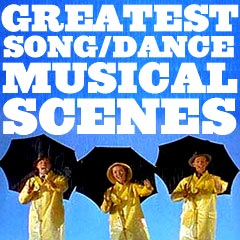
|
Musical Moments and Scenes C - 2 |
| C (continued) | |||||||||||
| Movie Title/Year and Scene Descriptions | |||||||||||

|
Carousel (1956) This downbeat yet ambitious Henry King-directed 20th Century Fox film was the filmic release of a Rodgers/Hammerstein musical adaptation that opened on Broadway in 1945 - it was the only Rodgers and Hammerstein film to be completely devoid of Academy Awards nominations. The film's soundtrack was extremely popular, but the film's box-office take was not impressive. The film reunited the co-stars of Oklahoma! (1955) - Gordon MacRae and Shirley Jones. It told about Billy Bigelow (Gordon MacRae) - a fast-talking circus barker in 1870s New England who attracted the attention of lovely mill-worker - as both love interest and future wife Julie Jordan (Shirley Jones) - and friend Carrie Pipperidge (Barbara Ruick). Its main songs were:
The best song/dance was Louise's Ballet that featured ballet dance legend Jacques d'Amboise as a seductive carnival barker (cast as Louise's 'Starlight Carnival' Dancing Partner), performing with Susan Luckey (as Louise Bigelow). |
     |
|||||||||
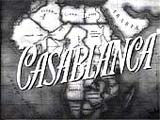
|
In this classic romance drama, llsa (Ingrid Bergman) requested that piano player Sam (Dooley Wilson) play As Time Goes By (pictured twice) to the consternation of cafe owner Rick Blaine (Humphrey Bogart), who later drunkenly requested it himself. Another memorable and stirring musical moment occurred when Rick nodded to the band leader to permit the playing of The Marseillaise (pictured) - the French national anthem - followed by the memorable duel of national anthems with the patrons joining in to sing and drown out the Germans' anthem Wacht am Rhein. |
  
|
|||||||||

|
Chicago (2002)
Rob Marshall's Best Picture-winning musical and box-office smash was adapted (screenwritten by Bill Condon) from Bob Fosse's long-running 1975 hit Broadway stage musical (originally directed and choreographed by Bob Fosse) and its later revival in 1996. The same story was previously filmed as Chicago (1927) and Roxie Hart (1942). The many showstopping numbers included:
Also there was:
The show-stopping blazing finale featured Nowadays/Hot Honey Rag (pictured) in which bitter rivals Roxie and Velma, newly released from prison, teamed up as a popular act. |
     
|
|||||||||

|
Chitty Chitty Bang Bang (1968, UK) This classic, colorful children's/family fantasy-musical (resembling Mary Poppins (1964) but with mixed reviews, and The Love Bug (1968)), directed and co-scripted (with Roald Dahl) (and based on the novel The Magical Car by Ian Fleming) by veteran British filmmaker Ken Hughes, starred Dick Van Dyke (as eccentric flying car inventor Caractacus Potts) and Sally Ann Howes (as Truly Scrumptious), the beautiful daughter of candy maker Lord Scrumptious (James Robertson-Justice). Widower Potts and Truly boarded the magical "fine four-fendered friend" car - miraculously transformed and now called "Chitty Chitty Bang Bang" for an 1910 adventure with Potts' two children, Jemima (Heather Ripley) and Jeremy (Adrian Hall), to the gaudy fictional kingdom of Vulgaria, ruled by Baron Bomburst (Gert Frobe) and his Baroness (Anna Quayle). The composing team of Richard and Robert Sherman wrote twelve original songs for the film which included:
|
     
|
|||||||||

|
A Chorus Line (1985) This over-dramatic modern-day backstage musical directed by Richard Attenborough, an adaptation of Michael Bennett's highly-successful stage production, opened with the Broadway audition number I Hope I Get It (pictured) where dozens of hopeful dancers tried to impress choreographer and ruthless director Zach (Michael Douglas) - who viewed them from the audience's seats in the darkness - for a spot in the 8-person chorus line. It also included the slightly bawdy song about plastic surgery titled Dance 10, Looks 3 (pictured) sung by pink-costumed Val (Audrey Landers): ("Tits and ass / Bought myself a fancy pair / Tightened up the derriere"). Other numbers included:
There were two renditions of One - first as a robotic, menacing vision of conformity, then reprised in the showstopping finale (pictured), featuring over a hundred identical chorus members (costumed in shimmering gold), multiplying geometrically on stage. |
  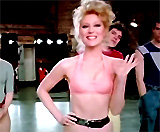 
|
|||||||||
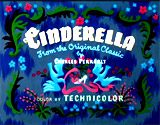
|
Cinderella (1950) This Disney feature film animation (with three Oscar nominations: Best Music Score, Best Sound Recording, and Best Original Song) was about a rags-to-riches transformation. It featured music and lyrics by Mack David, Jerry Livingston, and Al Hoffman, in:
|
 
|
|||||||||
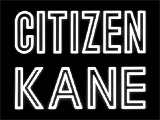
|
During the newspaper office party scene, the Charlie Kane Song (pictured) number was a rousing, intricately-edited song and dance production featuring a line of marching band members dressed in the costumes of Catherine the Great's Russia followed by dancing chorus girls carrying rifles. The stage show was led by a baton-wielding comic named Charles Bennett (in a white-striped blazer and a straw hat) who provided a singing tribute to Charles Foster Kane (Orson Welles): ("There is a man - a certain man / And for the poor you may be sure / That he'll do all he can! / Who is this one? / This fav'rite son?...") - soon after, Kane himself joined the chorus girls in the dance routine. The film also portrayed Kane's wife Susan Alexander's (Dorothy Comingore) disastrous debut playing the lead in the unsuccessful Salaambo (pictured) (with a stagehand's wordless review high up in the theatre - holding his nose in disgust at the embarrassing performance). |
    
|
|||||||||
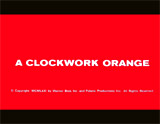
|
In Stanley Kubrick's futuristic sci-fi film's chilling rape scene, Alex DeLarge (Malcolm McDowell) and his "droogs" beat up an old man and raped his wife while Alex incongruously sang Singin' in the Rain (pictured) (the original Gene Kelly version would be reprised during the end credits with a memorably dark subtext).
|

|
|||||||||

|
Cover Girl (1944)
This elaborate 1940s musical was from Columbia Pictures (Columbia's first Technicolor musical) and first-time musical director Charles Vidor. The Jerome Kern and Ira Gershwin songs complemented the entire film along with great photography by Rudolph Mate. The film's sole Oscar win from five nominations was Best Score. It was designed to showcase iconic red-headed star Rita Hayworth (as ambitious showgirl and top magazine cover girl Rusty Parker). It also featured a joint appearance with rising and exuberant young dancer Gene Kelly (as Brooklyn nightclub owner/dancer Danny McGuire), as well as comic roles played by Phil Silvers (as Genius) and Eve Arden (as Cornelia "Stonewall" Jackson). The most famous number was the beautifully-timed landmark Alter Ego dance (pictured) performed by the athletic and imaginative Gene Kelly, in which he literally danced with a semi-transparent reflection of himself (double-exposed) in a storefront glass window - the spectacular solo ended with Kelly heaving a trash can barrel at his telltale image. Other numbers included:
|
     
|
|||||||||

|
Curly Top (1935) Fox's burgeoning 7 year-old superstar Shirley Temple starred as curly-haired orphan Elizabeth Blair. In one scene, she sang the delightful Animal Crackers in My Soup (pictured) ("In every bowl of soup I see Lions and Tigers watching me I make 'em jump right through a hoop Those animal crackers in my soup"). Later, she sang When I Grow Up. She also tap-danced on top of a piano to the tune of Curly Top (pictured). |
 
|
|||||||||
(alphabetical by film title) Introduction | A-1 | A-2 | B-1 | B-2 | B-3 | C-1 | C-2 | D-1 | D-2 | E | F-1 | F-2 | G-1 | G-2 H-1 | H-2 | I-J | K | L-1 | L-2 | M-1 | M-2 | N-O | P-1 | P-2 | R-1 | R-2 | S-1 | S-2 | S-3 | T | U-V | W | X-Z |